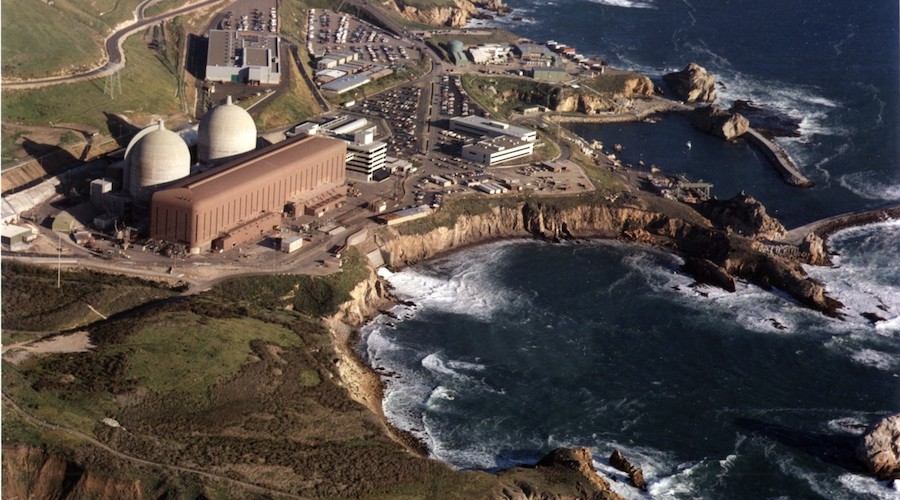
Researchers published a report that states that nuclear power plants slated to close by 2050 in the United States could be among the most important players in addressing climate change.
According to the dossier, nuclear power is the single largest source of carbon-free energy in the US and currently provides nearly 20% of the nation’s electrical demand. If the existing nuclear fleet were brought into the year 2100, it has the potential to make significant contributions to limiting global warming.
Such contributions could even be boosted by building new plants but driving down construction costs.
“Even modest reductions in capital costs could bring big climate benefits,” Son H. Kim, lead author of the report and a scientist at the Pacific Northwest National Laboratory, said. “Significant effort has been incorporated into the design of advanced reactors to reduce the use of all materials in general, such as concrete and steel because that directly translates into reduced costs and carbon emissions.”
Kim pointed out that the nuclear power fleet in the US consists of 93 operating reactors across 28 states. Most of these plants were constructed and deployed between 1970 and 1990. This means half of the fleet has outlived its original operating license lifetime of 40 years. While most reactors have had their licenses renewed for an additional 20 years, and some for yet another 20, the total number of reactors that will receive a lifetime extension to operate a full 80 years from deployment is uncertain.
In other words, the US faces the potential retirement of a bulk of reactors in a short period of time—this could have a far stronger impact than the staggered closures other countries may experience.
“Our existing nuclear power plants are aging and with their current 60-year lifetimes, nearly all of them will be gone by 2050. It’s ironic. We have a net zero goal to reach by 2050, yet our single largest source of carbon-free electricity is at risk of closure,“ Kim said.
The researcher used the Global Change Analysis Model (GCAM) to model multiple scenarios of extending the lifetime of the existing nuclear fleet into 2100. His results put a value on lifetime license extensions from 40 to 100 years at $330 billion to $500 billion in mitigation cost savings under a scenario that limits global temperature to 2°C.
Mitigation costs savings, or the carbon value, are amounts of dollars saved in reducing greenhouse gas emissions. Legacy nuclear reactors alone have a carbon value of $500 billion if operational for 100 years. Every gigawatt of energy, or one nuclear power reactor, translates to $5 billion later saved. Because that gigawatt was produced without any carbon emitted into the earth’s atmosphere, no money would need to be spent to mitigate its effects.
Maintaining existing nuclear power plants avoids replacing reactors with electricity sources that produce carbon emissions. In states where nuclear reactors have been shut down, carbon emissions have increased from replacing carbon-free electricity with natural gas-generated electricity.
Kim determined that lifetime extensions of existing nuclear power reactors from 60 to 80 years, without adding new nuclear capacity, contributed to a reduction of approximately 0.4 gigatons of carbon (GtCO2) emissions per year by 2050. The total cumulative difference in CO2 emissions between 2020 and 2100, in a scenario with lifetime extensions and future deployment of nuclear power plants (as compared to a scenario with a moratorium on new nuclear power plants), amounts to as much as 57 GtCO2.
According to the International Energy Agency, US carbon emissions in 2022 were 4.7 Gt, which means nuclear energy could save approximately 12 years’ worth of carbon emissions.
Since building new power plants is expensive and takes time, Kim believes that advanced reactors —including small modular reactors and microreactors— will play an important role in the future US electricity system and carbon mitigation efforts.
“One of the most important attributes of small modular reactors and microreactors is the reduced construction time,” Kim said. “SMRs and microreactors will be factory fabricated and delivered to the site on trucks, and the uncertainty associated with financing cost should be reduced or eliminated.”
Kim used GCAM to investigate a range of nuclear plant capital costs with scenarios of alternative carbon mitigation policies, and US economy-wide net-zero emission goals by 2050, 2060, and 2070.
Among the multiple findings, he noticed that an aggressive reduction of nuclear construction costs has a clear and pronounced impact on the expanded deployment of nuclear power under all scenarios, even without an explicit carbon mitigation policy.
Continuing to generate electricity while removing all emissions of greenhouse gases by mid-century is a difficult challenge. “We must utilize all carbon-free technologies that are available to us,” Kim said, “and one of the great values of nuclear energy is that it doesn’t emit carbon while it’s generating power.”